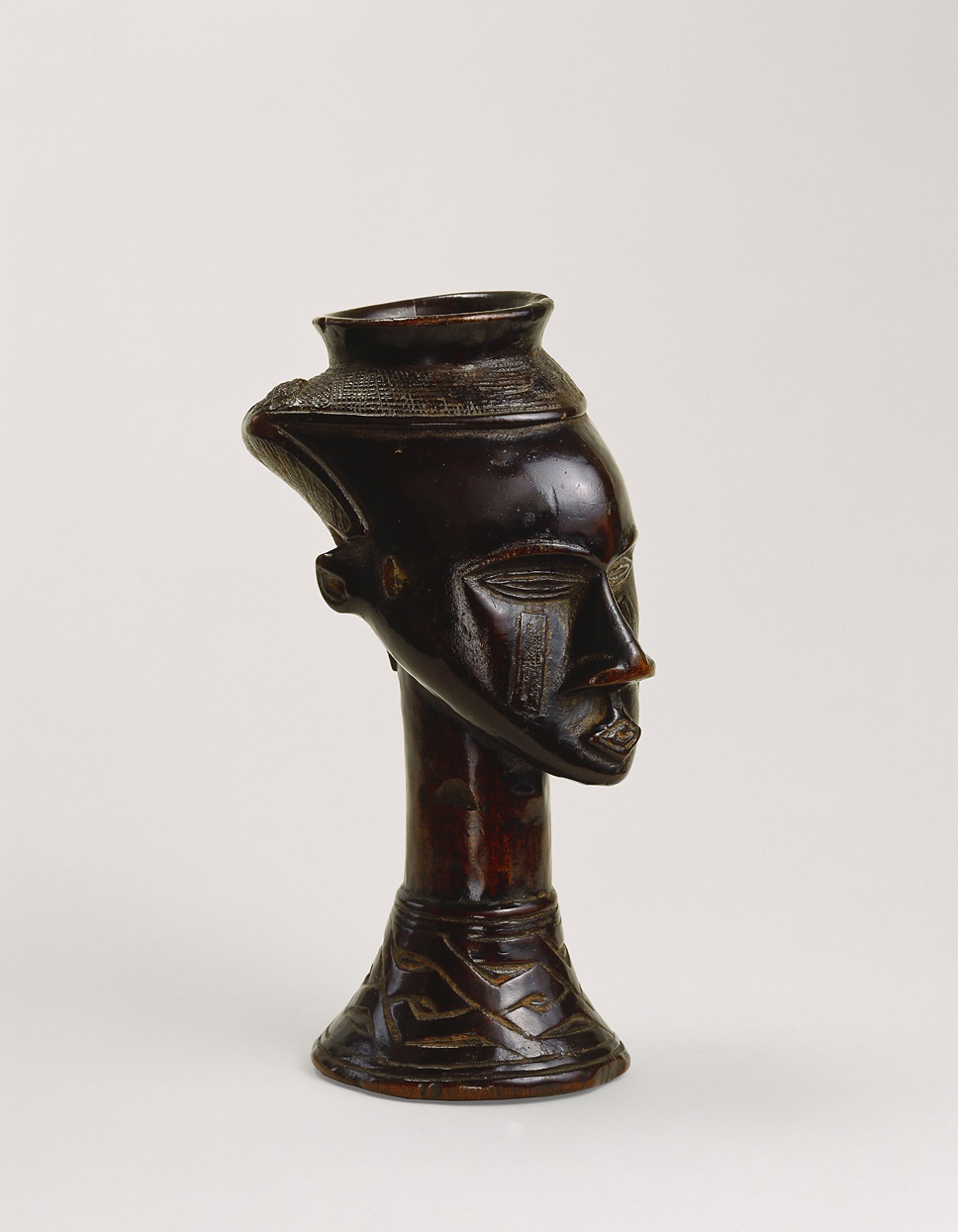
Wood
H: 20.9 cm
Probably from Kuba territory (Kasaï - Sankuru area of Zaïre)
Kuba art
Possibly 19th century
Ex collection:
Dr. Stephen Chauvet
Patina: dark reddish brown surface highly polished, must have formerly been smeared with a red paste of ngula [1] of which there are still traces behind the ears on the hair-line.
Carved with admirable proficiency out of hard wood in a highly realistic fashion, this beaker exhibits the primacy of the aesthetic with its sophisticated decorative details which are sometimes said to derive from the patterns of fibre mats, raffia-pile or "velvet" cloths for which the Kuba were famous; note the decorative patterns on the flaring foot. The two vertical bands of scarification on the cheeks may indicate that this is the stylized portrait of a courtier.
The elongated neck not only contributes to elegance, but serves to centre attention on the face.
We see the head as expressing a certain sensitivity and controlled imagination associated with impressive power and a refined cruelty.
The origins of the Kuba kingdom lie in the early 17th century. This beaker or goblet in the shape of a human head is one of the sumptuous objects which surely formed part of elaborate court ritual. Its evident quality suggests royal and court interest in and patronage of the arts.
This highly developed court art of carving confirms Paul S. Wingert's [2] statement "... by ... the magnificence of their technique, these carved cups ... represent the finest examples of African decorative sculpture."
Exhibited and Published:
Arts africains dans les collections genevoises, cat. no. 88, pp. 104, 80 fig. 59.
Meisterwerke afrikanischer Plastik, cat. no. 40,
pp. 84-85, 54 ill.
Mentioned :
Roudillon, J.: Le Docteur Stephen Chauvet - Initiation à l'Etude de l'Art Nègre, Primitifs 5, Juillet-Août 1991, p. 57 fig. 3.
Ethnography Glossary
We are indebted to B.J. Mack, Keeper of the Department of Ethnography of the Museum of Mankind, for reading our previous entry, which made use of L. Segy and some of his theories (Bakuba Cups: An Essay on Style Classification, The Midwest Journal IV, 1, Winter 1951-1952, p. 27), and for suggesting a more up-to-date approach. We are grateful for his indications but bear full responsibility for any mistakes in this entry.
1 Also called tukula which is a red powder made from the bark of the ptero-carpus tree.
2 Wingert, P.S.: The Sculpture of Negro Africa (New York, 1950), p. 63.